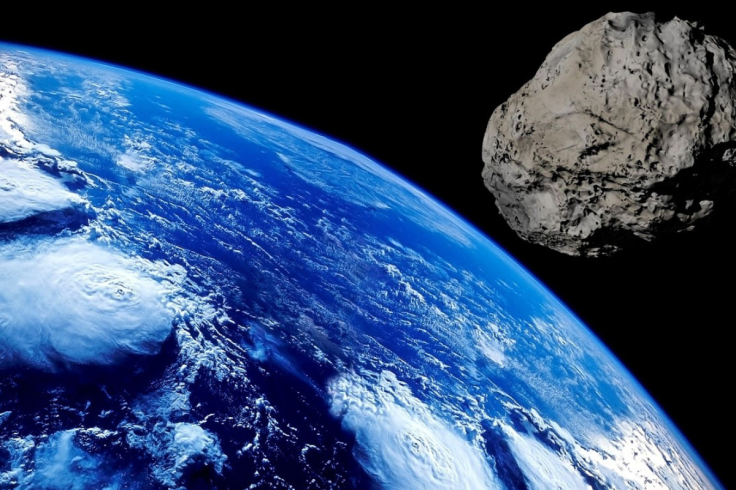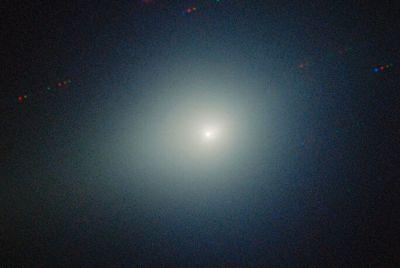What Is The Asteroid Terrestrial-impact Last Alert System? Earth Defenses On Alert As 3i Atlas Comet Might 'Hit' Earth
No collision risk exists, as confirmed by NASA and ESA trajectories

As the mysterious interstellar comet 3I/ATLAS speeds towards its perihelion on 29 October 2025, NASA's Asteroid Terrestrial-impact Last Alert System (ATLAS) remains on watch — a reminder of humanity's growing vigilance against potential cosmic threats.
Discovered on 1 July 2025 by ATLAS telescopes, the comet is the third confirmed visitor from beyond our solar system. Its arrival has reignited speculation about possible alien technology and so-called 'black swan' space events. Scientists stress, however, that there is no immediate risk of impact with Earth, describing the object instead as a valuable opportunity to improve planetary defence strategies.
To that end, the International Asteroid Warning Network will run an astrometry campaign from November 2025 to January 2026, coordinating observatories worldwide to monitor any anomalies in 3I/ATLAS's trajectory and behaviour.
The ATLAS System: Safeguarding Earth from Near-Earth Objects
NASA's ATLAS, comprising four optical telescopes in Hawaii (two sites), Chile, and South Africa, scans the entire visible sky multiple times nightly to detect potentially hazardous near-Earth objects (NEOs). Optimised for spotting smaller asteroids mere days or weeks before potential Earth impact, the system issues rapid alerts to enable mitigation, as demonstrated by its role in discovering over 100 NEOs annually.
Funded by NASA's Planetary Defense Coordination Office, ATLAS operates autonomously, using advanced algorithms to differentiate moving celestial bodies from stars and satellites. On 1 July 2025, the Chile-based ATLAS telescope first captured 3I/ATLAS, an interstellar comet originating from the constellation Sagittarius, highlighting the system's prowess in identifying rare visitors.
While larger threats like Apophis garner headlines, ATLAS excels at early warnings for city-killer asteroids, bolstering the broader International Asteroid Warning Network (IAWN). This network fosters international data sharing, ensuring no blind spots in our cosmic vigilance.
Discovery and Path of the 3I/ATLAS Interstellar Comet
The comet 3I/ATLAS, formally C/2025 N1 (ATLAS), emerged as the third confirmed interstellar object after 'Oumuamua and Borisov, detected on 1 July 2025 by ATLAS in Río Hurtado, Chile. Travelling at hyperbolic speeds indicative of extrasolar origin, it approaches perihelion on 29–30 October 2025, at approximately 1.4 astronomical units (AU) from the Sun—inside Mars' orbit but safely distant from Earth at a minimum of 1.8 AU.
Recent Hubble Space Telescope images reveal a Manhattan-sized nucleus expelling a giant jet of gas and dust towards the Sun, fuelling speculation on its anomalous light curve and potential non-gravitational accelerations. No collision risk exists, as confirmed by NASA and ESA trajectories, yet its re-emergence post-solar conjunction on 29 October 2025 prompts intensified observations to map coma evolution and outgassing.
ESA's ExoMars and Mars Express missions have already captured spectra, revealing organic-rich compositions akin to solar system comets, dispelling immediate doomsday fears while enriching interstellar chemistry knowledge. This visitor's passage offers a unique window into distant stellar nurseries.
NASA's Planetary Defense and Speculations on Extraterrestrial Origins
In response to 3I/ATLAS's peculiarities, NASA has activated elements of its Strategy for Planetary Defense, coordinating with IAWN for a dedicated astrometry campaign from November 2025 to January 2026 to refine orbital predictions and test observation protocols.
'The campaign will target comet 3I/ATLAS (C/2025 N1) to exercise the capability of the observing community to extract accurate astrometry,' states the Minor Planet Center bulletin, amid reports of offset photometric centres challenging standard models. Harvard astronomer Avi Loeb posits a 40 per cent chance of alien technology, citing potential maneuvers near perihelion, while physicist Michio Kaku warns of monitoring for 'excess energy' as a 'bingo' for intelligent guidance.
X user @UAPWatchers noted on 22 October 2025: 'NASA Quietly Activates Planetary Defense Network for 3I/ATLAS... the object isn't behaving like it should.'
🚨NASA Quietly Activates Planetary Defense Network for 3I/ATLAS Without Saying a Word
— Skywatch Signal (@UAPWatchers) October 21, 2025
Buried in tonight’s official MPEC (2025-U142) the Minor Planet Center’s internal bulletin is an editorial notice that says it all:
“Announcement of IAWN Comet Astrometry Campaign Nov. 27,… pic.twitter.com/7raRNP5yOh
Future assets like NEO Surveyor, launching no earlier than 2027, will enhance such tracking, ensuring robust defenses against hypothetical interstellar threats.
© Copyright IBTimes 2025. All rights reserved.


















